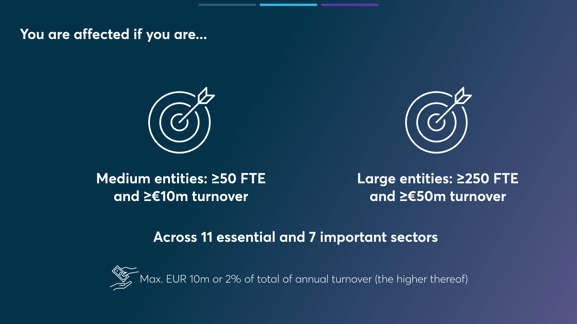As a recent poll among more than 400 of our prospects suggests, about 20% of them have never heard of NIS2 before. Considering the huge implications the directive has for many companies in the EU – it’s about time to change that!
DataGuard teamed up with business newspaper Handelsblatt to talk with Dr. Marnix Dekker, Head of Sector NIS at ENISA (European Union Agency for Cybersecurity), our DataGuard Co-Founder Kivanc Semen and Dr. Frank Schemmel, Senior Director International Privacy & Compliance at DataGuard about why NIS2 was established, what changed compared to NIS1 and how to best prepare your company for the upcoming laws.
Read on for a summary of the NIS2 webinar.
Why the EU drafted the NIS2 Directive
Looking at these numbers, it becomes clear: the newest effort of the EU to strengthen cyber security is not only fundamental but also in the best interest of companies needing to protect their assets.
“The increasing use of technology in our daily lives has made us more vulnerable to cyber criminals who are constantly developing new methods of attacks”, said Schemmel.
“Ransomware is scoring as the prime threat followed by malware and social engineering. That is why the European legislator took action to increase the level of cybersecurity and and cyber resilience in Europe.” he added.
“The NIS Directive is about keeping attackers out and being able to deal with incidents”, Marnix Dekker said, “it’s about making sure that society keeps running, making sure that the economy is not affected.”
“It’s much more a partnership between national authorities and the owners of infrastructure than about compliance.”
From NIS1 to NIS2 - most important changes
The NIS2 Directive continues the focus on the resilience of NIS1.
It attempts to harmonise the cyber security rules and increase collaboration across EU member states, something that NIS1 was lacking with countries adopting widely different measures and scopes.
There is more detail about what security measures need to be taken and how to implement risk management.
“It’s important to keep in mind that the national authority does not sit on the chair of the CISO”, Dekker noted. “It’s not the government that decides what security measures have to be in place. It’s always risk-based.”
But to increase accountability, national authorities are also given more room for sanctions. Most notably, the C-suite is now personally liable for failure to implement the required measures.
Fines can go up to 10 Mio. € or 2% of total turnover.
Additionally, the number of affected business sectors has drastically increased: “There’s twice as many sectors and more entities covered within each sector”, Dekker told us.
All the more important for companies to find out now if NIS2 applies to them.
Who is affected by NIS2? – The sectors explained

Sectors are divided into two groups – Essential Entities and Important Entities. Essential Entities are subject to increased supervision and sanctions. They were already part of NIS1.
The newly added Important Entities consist of postal and courier services, waste management, chemicals, manufacturing, and digital providers.
Generally, the NIS2 Directive only applies to companies with upwards of 50 employees and 10 Mio. € of yearly turnover. Critical infrastructure, which includes digital infrastructure in NIS2, is affected by the regulations regardless of size.
So, where to start? As Kivanc Semen points out, a “22% budget increase is going to be needed for companies that haven’t done NIS2 before”.
If your company is affected by NIS2, that means the first steps are centred around raising awareness with the management to facilitate the necessary budget planning.
.png?width=1920&height=1080&name=Slide%2075%20(1).png)













